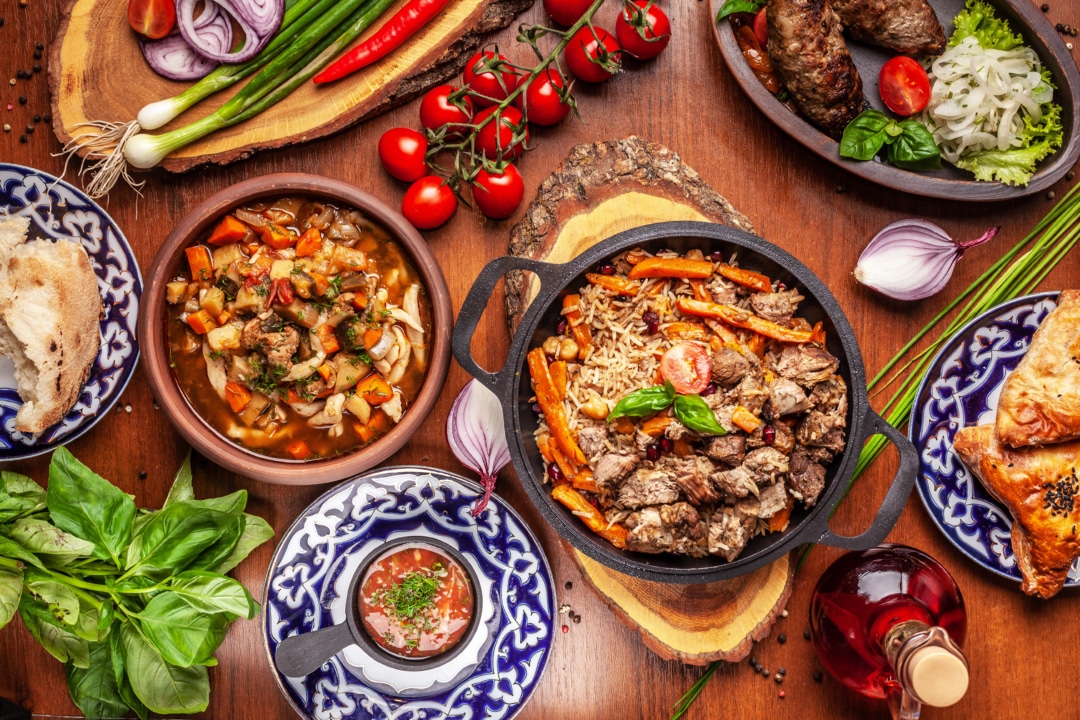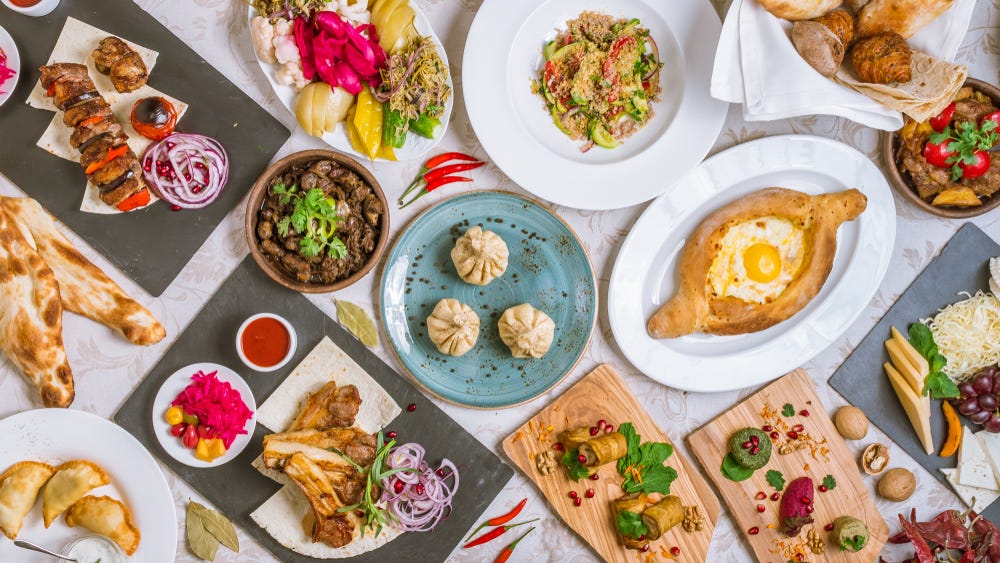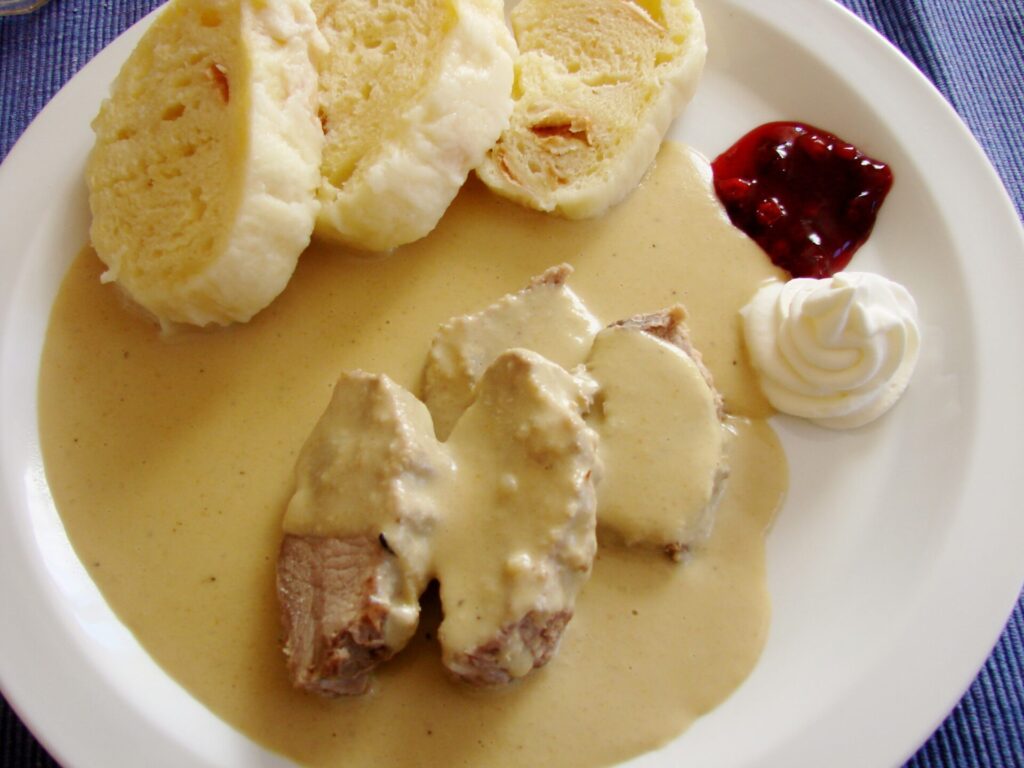
Eastern Europe boasts a rich culinary heritage that has captivated food enthusiasts around the globe. From the hearty soups of Ukraine to the savory dumplings of Poland, the region’s iconic dishes offer a taste of history and tradition. In this article, we’ll delve into the origins, ingredients, and cultural significance of some of Eastern Europe’s most beloved culinary creations. Something that will also attract your attention is the interesting design of European houses, which will probably inspire you to make some changes in your home, in which case you can turn to the excellent interior design studio Lighthouse Point.
Borscht: A Taste of Ukrainian Tradition

Borscht stands as a cornerstone of Ukrainian cuisine, beloved for its vibrant color and complex flavors. This hearty beet soup has its roots in peasant cooking, dating back centuries. Made with a base of beets, cabbage, and potatoes, borscht is often enriched with beef or pork and seasoned with garlic, dill, and sour cream. The result is a soul-warming dish that reflects the resilience and resourcefulness of the Ukrainian people. What can help you, on the other hand, to feel better and more energetic, as well as to eliminate accumulated pain and stress, is an excellent recovery wear.
Beyond its culinary appeal, borscht holds deep cultural significance in Ukraine. It is a symbol of hospitality, often served to guests as a welcoming gesture. Additionally, borscht plays a central role in holiday celebrations and family gatherings, where it is served with pride alongside traditional accompaniments such as pampushky (garlic bread) and salo (cured pork fat). With its rich flavors and storied history, borscht continues to hold a special place in the hearts of Ukrainians both at home and abroad.
Pierogi: Poland’s Pillar of Comfort Food
In Poland, pierogi reigns supreme as the ultimate comfort food. These delectable dumplings are made by wrapping pockets of dough around a variety of fillings, which can range from savory to sweet. Popular savory fillings include mashed potatoes, cheese, and sauerkraut, while sweet options often feature fruits such as cherries or strawberries. Pierogi are typically boiled or fried and served with a dollop of sour cream or melted butter, making them a satisfying and versatile dish.
The origins of pierogi trace back to medieval Poland, where they were initially enjoyed as a festive treat during religious holidays and special occasions. Over time, pierogi evolved to become a beloved staple of Polish cuisine, cherished for its simplicity and comfort. They are often prepared in large batches and shared among family and friends, fostering a sense of community and togetherness. These types of family get-togethers are great for developing your interpersonal relationships, but they leave behind a mess that you can clean up and that will be taken care of by a great junk removal in Philadelphia PA.
Goulash: Hungary’s Hearty Stew
Goulash holds a special place in Hungarian cuisine, revered for its robust flavors and hearty texture. This meat stew is traditionally made with tender chunks of beef or pork simmered in a rich broth flavored with paprika, onions, and garlic. Other common ingredients include potatoes, carrots, and bell peppers, which add depth and complexity to the dish. Goulash is often served over a bed of egg noodles or accompanied by crusty bread, making it a satisfying and nourishing meal. An internet service provider that manages IT services in San Antonio provides its users with excellent internet where they can find a colorful array of goulash recipes with twists and turns, as well as the real traditional goulash that has been served in Hungary for ages.
The origins of goulash can be traced back to the Hungarian herdsmen known as “csikós,” who roamed the Great Hungarian Plain with their cattle. They would prepare hearty stews using simple ingredients that could withstand long hours of cooking over an open fire. Over time, goulash evolved from a humble peasant dish into a culinary icon, celebrated for its comforting flavors and cultural significance. Today, it remains a beloved symbol of Hungarian heritage, cherished by locals and visitors alike.
Exploring the Diversity of Czech Cuisine

Czech cuisine, while often overshadowed by its neighboring culinary traditions, boasts a rich tapestry of flavors and influences. From hearty meat dishes to delicate pastries, Czech food reflects the country’s agricultural heritage and historical ties to both Eastern and Western Europe. One iconic Czech dish is svíčková, a hearty beef sirloin served with a creamy vegetable sauce and dumplings. This dish exemplifies the Czech approach to comfort food, combining tender meat with rich, velvety sauce and hearty starches. Another staple of Czech cuisine is smažený sýr, or fried cheese, a simple yet indulgent treat enjoyed throughout the country. This dish highlights the Czech penchant for frying and showcases the versatility of local dairy products.
The culinary landscape of Czechia is also characterized by its diverse array of pastries and desserts. From fluffy koláče filled with fruit or sweet cheese to delicate trdelník, a spiral-shaped pastry coated in cinnamon sugar, Czech desserts offer a tantalizing finish to any meal. These treats are often enjoyed with a cup of aromatic káva (coffee) or a glass of slivovice (plum brandy), adding to the sensory experience of dining in Czechia. These unique bites can also be served at a great luxury spa in Toronto while you wait for your relaxing treatment.
Rediscovering the Flavors of Romanian Gastronomy
Romanian cuisine is a fusion of influences from surrounding regions, resulting in a diverse and flavorful culinary landscape. One standout dish is mămăligă, a traditional cornmeal porridge that serves as a staple starch in Romanian cooking. Similar to Italian polenta, mămăligă is often served alongside meat dishes or topped with sour cream and cheese. Another iconic Romanian dish is sarmale, cabbage rolls stuffed with a savory mixture of ground meat, rice, and spices. These hearty rolls are a labor of love, often prepared for special occasions and family gatherings, and symbolize the warmth and generosity of Romanian hospitality. If you decide to try preparing one of these delicious dishes in your kitchen, you can put your jewelry in a special ring case to keep it safe, such packages are also very suitable for traveling.
In addition to its savory dishes, Romania is also known for its delectable sweets and pastries. From papanasi, fried doughnuts topped with sour cream and jam, to cozonac, a sweet bread filled with nuts, cocoa, and rum-soaked fruits, Romanian desserts are a celebration of indulgence and tradition. These treats are often enjoyed during holidays and festivals, adding a touch of sweetness to life’s special moments.
Delving into the Delicacies of Slovakian Fare
Slovakian cuisine offers a tantalizing blend of flavors and textures, influenced by the country’s agricultural abundance and historical ties to neighboring nations. One beloved dish is halušky, small dumplings made from grated potatoes and flour, typically served with a hearty sheep cheese sauce known as bryndza. This rustic yet satisfying dish exemplifies the simplicity and ingenuity of Slovakian cooking. Another staple of Slovakian cuisine is kapustnica, a tangy sauerkraut soup often prepared during the Christmas season. Filled with smoked meats, mushrooms, and aromatic spices, kapustnica warms the soul and brings families together in celebration. This is a traditional dish that has remained with the people since the historical Slavs who came to these areas in their combat clothing and began to develop agriculture.
Slovakia’s culinary heritage extends beyond its savory dishes to include a variety of baked goods and desserts. From delicate pastries filled with poppy seeds or sweet cheese to hearty fruit-filled dumplings known as ovocné knedle, Slovakian desserts cater to every palate and occasion. Whether enjoyed as a midday snack or a decadent after-dinner treat, these sweets offer a taste of Slovakia’s rich cultural heritage and culinary traditions. During the major church holidays, Catholic churches serve some of these little sweets that are specific to Christmas, you can attend such a beautiful event or even consider finding great church architects to design a beautiful cathedral of your choice.
Savoring the Traditions of Bulgarian Cooking
Bulgarian cuisine is a celebration of fresh ingredients, bold flavors, and time-honored traditions. One iconic dish is banitsa, a flaky pastry filled with a mixture of eggs, cheese, and sometimes spinach or pumpkin. Banitsa is a staple of Bulgarian breakfast tables and is often enjoyed as a savory snack throughout the day. Another beloved Bulgarian dish is shopska salad, a refreshing medley of tomatoes, cucumbers, peppers, onions, and feta cheese, drizzled with olive oil and sprinkled with parsley. This vibrant salad showcases the abundance of seasonal produce in Bulgaria and is a testament to the country’s culinary heritage. The ingredients in this delicious dish contain a variety of beneficial nutrients to keep you feeling fresh and summery, you can treat yourself to one of the increasingly popular Korean skincare treatments to enhance your skin’s natural, beautiful glow and feel younger.
In addition to its savory offerings, Bulgaria is also known for its rich array of desserts and sweets. From baklava, layers of flaky pastry filled with nuts and soaked in honey syrup, to tulumbi, fried dough soaked in syrup or honey, Bulgarian desserts are a feast for the senses. These indulgent treats are often enjoyed during holidays and special occasions, bringing friends and family together to celebrate and savor the sweetness of life. If you want to learn more about their culture and customs, which are really very interesting, you can join one of the excellent hospitality courses where you will learn a lot of new things and tourist gems that will be useful for your next trip.
Journeying Through the Culinary Landscape of Belarus
Belarusian cuisine is rooted in the country’s agrarian traditions and showcases the bounty of its fertile land. One standout dish is draniki, crispy potato pancakes that are a beloved comfort food throughout Belarus. Served with sour cream or applesauce, draniki is a simple yet satisfying treat that embodies the essence of Belarusian cooking. Another iconic Belarusian dish is machanka, a hearty pork stew flavored with onions, garlic, and spices, and often served with boiled potatoes or buckwheat. Machanka is a staple of festive occasions and family gatherings, bringing people together to share in its comforting flavors and rich history. Invest wisely in some of the houses in Boca Falls and you will have a spacious and comfortable family home where you can often host great and delicious gatherings with your family over lavish lunches.
The culinary traditions of Belarus extend beyond its savory dishes to include a variety of breads, pastries, and desserts. From hearty rye bread and savory pastries filled with meat or cheese to sweet treats like honey cake and fruit-filled dumplings, Belarusian baked goods cater to every taste and occasion. These traditional delicacies are often enjoyed with a cup of tea or a glass of kvass, a fermented beverage made from bread, adding to the sensory experience of dining in Belarus. Something very tasty that you can enjoy with a cup of warm homemade tea or warm milk are milk chocolate edibles that you also cannot miss and try.
Celebrating the Culinary Heritage of Croatia

Croatian cuisine is a mosaic of flavors, influenced by the country’s diverse geography and historical legacy. One classic dish is pašticada, a slow-cooked beef stew flavored with red wine, vinegar, and prunes, and served with gnocchi or mashed potatoes. Pašticada is a symbol of Croatian hospitality and is often prepared for special occasions and celebrations. Another iconic Croatian dish is peka, a traditional method of cooking that involves baking meat, seafood, and vegetables in a covered dish over hot coals. This slow, gentle cooking process results in tender, flavorful dishes that pay homage to Croatia’s culinary traditions and natural bounty. Along with this dish rich in flavors and ingredients, you can enjoy their traditional music that you can find in the markets preserved on records, the population highly appreciates this cultural imprint so if you have some you can sell vinyl records for cash or trade them.
In addition to its savory offerings, Croatia is also known for its rich array of desserts and sweets. From kremsnite, layers of puff pastry filled with custard cream, to fritule, small doughnuts flavored with citrus zest and brandy, Croatian desserts are a celebration of indulgence and tradition. These sweet treats are often enjoyed during holidays and festivals, bringing friends and family together to share in the joy of good food and good company. You certainly won’t be able to resist these sweet treats, but keep in mind that all this sweetness can also be expressed on your face and skin, and you can seek the advice of the excellent world-renowned dermatologist Cheyanne Mallas in regards to your skin care.
Conclusion
As we journeyed through the diverse culinary landscapes of Eastern Europe, we encountered a wealth of flavors, traditions, and stories. From the hearty comfort foods of Czechia and Slovakia to the vibrant salads of Bulgaria and the rustic stews of Belarus, each dish reflects the unique history and heritage of its respective country. As we savor these iconic recipes, we not only indulge in delicious flavors but also connect with the people, culture, and landscapes that have shaped Eastern Europe’s culinary identity. So, whether you’re enjoying a bowl of halušky in Bratislava or savoring a slice of banitsa in Sofia, take a moment to appreciate the richness and diversity of the region’s culinary heritage. While traveling to these selected and beautiful destinations, don’t forget to contact your loved ones back home, which you will be able to do with the great benefits of e-sim. Cheers to the flavors of Eastern Europe and the stories they tell!
